12v 1000ma 12v 1a Power Supply Isolated Switching Power Supply Ac Dc Power Supply
₨ 300
12V 1000mA 12V 1A Power Supply Isolated Switching Power Supply AC DC Power Supply
-
Voltage Output: The power supply provides a stable output voltage of 12 volts. This means that any device connected to this power supply will receive a constant supply of 12 volts.
-
Current Output: The power supply can deliver a maximum current of 1000 milliamperes (mA) or 1 ampere (A). This indicates the amount of electric current the power supply can provide to the connected device. In this case, the power supply can provide up to 1A of current.
-
Isolated: An isolated power supply means that the output voltage is electrically separated from the input voltage. This isolation helps to prevent electrical interference and provides safety benefits, particularly when connecting the power supply to other devices or systems.
-
Switching Power Supply: This type of power supply utilizes a switching mechanism to regulate the output voltage. It generally provides better efficiency and smaller size compared to traditional linear power supplies. It achieves this by rapidly switching the input voltage on and off and then smoothing it out to provide the desired output voltage.
-
AC-DC Power Supply: This power supply converts an alternating current (AC) input voltage into a direct current (DC) output voltage. Most electronic devices require DC power to operate, so an AC-DC power supply is essential for powering these devices from standard AC power outlets.
Features:
-
Voltage Output: Provides a stable and regulated DC output voltage of 12 volts.
-
Current Output: Capable of delivering up to 1000mA (1A) of current to power connected devices.
-
Isolated Design: Offers electrical isolation between the input and output sides, enhancing safety and reducing the risk of electrical interference.
-
Efficient Conversion: Utilizes switching technology for high efficiency in converting AC input voltage to DC output voltage. This efficiency helps reduce energy wastage and heat generation.
-
Wide Input Voltage Range: Compatible with a broad range of AC input voltages, typically spanning from 100V to 240V AC, suitable for global use.
-
Compact Size: Designed with a compact form factor, making it space-efficient and suitable for various applications.
-
Cooling Mechanism: Incorporates efficient cooling methods, which could involve passive cooling through heatsinks or active cooling with fans, ensuring proper heat dissipation during operation.
-
Protection Features: May include built-in protection mechanisms such as over-current protection (OCP), over-voltage protection (OVP), short-circuit protection, and thermal protection. These safeguards help prevent damage to the power supply and connected devices.
-
Versatile Connectors: Equipped with appropriate output connectors, like barrel connectors, screw terminals, or USB connectors, to accommodate different types of devices.
-
Certifications: Likely to possess safety and regulatory certifications such as UL, CE, FCC, or other relevant standards, indicating compliance with industry safety and performance requirements.
-
Operating Temperature Range: Designed to operate within a specified temperature range, ensuring stable and reliable performance even under varying conditions.
-
Indicator Lights: Some models might feature indicator LEDs to show power status or fault conditions.
-
Universal Compatibility: Suitable for a wide range of electronic devices that require a 12V DC power source, including routers, modems, CCTV cameras, LED strips, and more.
-
Low Electromagnetic Interference (EMI): Switching power supplies are often designed to minimize EMI, which can help prevent interference with other nearby electronic devices.
-
User-Friendly: Easy to set up and use, requiring minimal technical knowledge to connect and power devices.
-
Reliability: Engineered for long-term reliability and consistent performance.
-
Energy Efficiency: The switching mechanism contributes to energy efficiency, reducing energy consumption and operational costs.
-
Lightweight: Thanks to its compact design and modern technology, the power supply is typically lightweight and easy to handle.
-
Overload Handling: Capable of managing temporary overload conditions within specified limits.
Specifications:
-
Input Voltage: The power supply accepts an input voltage from an AC power source. Common input voltage ranges include 100-240V AC, which covers a wide range of standard voltages found in different regions around the world.
-
Output Voltage: The power supply provides a regulated DC output voltage of 12 volts.
-
Output Current: The maximum output current that the power supply can deliver is 1000 milliamperes (mA) or 1 ampere (A).
-
Output Power: The output power is calculated by multiplying the output voltage and current: 12V * 1A = 12 watts.
-
Isolation: The power supply is designed with electrical isolation between the input and output sides, providing safety and reducing the risk of electrical interference.
-
Efficiency: Switching power supplies are known for their efficiency. The efficiency of the power supply indicates how effectively it converts the input power into usable output power. Modern switching power supplies often have efficiencies of around 85% to 95% or even higher, depending on the design and load conditions.
-
Protection: The power supply might include various protection mechanisms to ensure safe operation. These could include over-current protection (OCP), over-voltage protection (OVP), short-circuit protection, and thermal protection.
-
Cooling: Depending on the design and power output, the power supply might have passive cooling (relying on heatsinks) or active cooling (using fans) to dissipate heat generated during operation.
-
Connectors: The power supply will have connectors on the output side to connect to the device or circuitry that requires the 12V DC power. Common connectors include barrel connectors, screw terminals, or even USB connectors for lower-power applications.
-
Size and Form Factor: The physical size and form factor of the power supply can vary. Some are designed as plug-in adapters, while others might be enclosed in a housing for mounting in a device or enclosure.
-
Certifications: Depending on the intended use and region, the power supply might carry certifications such as UL, CE, FCC, or other safety and regulatory approvals.
-
Operating Temperature: The power supply will have an operating temperature range specified, indicating the temperatures at which it can safely and reliably operate.
Be the first to review “12v 1000ma 12v 1a Power Supply Isolated Switching Power Supply Ac Dc Power Supply” Cancel reply
Related products
Arduino Modules Components
Arduino Modules Components
1 Meter 18650 Nickel Strip Belt Tape Li-ion Battery Connector Spcc Spot Welding Bms Parts 0.12mm 5mm
Arduino Modules Components
0.1mm Pcb Link Jumper Wire Copper Soldering Wire Maintenance Jump Line
Arduino Modules Components
1 Meter IDC Silver Flat Ribbon Cable for 2.54mm Connectors 16 Core Ribbon Cable Flat Cable
Arduino Modules Components
1 Meter 0.2337mm 34 SWG Nichrome Wire Resistance Nickel Chrome Heating Wire 35.5 Ohm/meter
Arduino Modules Components
Arduino Modules Components
1 Meter 10pcs Hard Jumper Wires 100cm Spiral Wrap Wires 10 Core Cable
Arduino Modules Components
1 Meter Green Ul1015 Wire Cable 12awg Tinned Copper 105 Degree Ul Certification


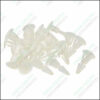





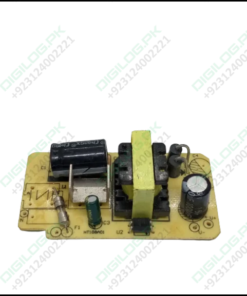





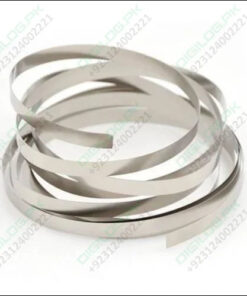







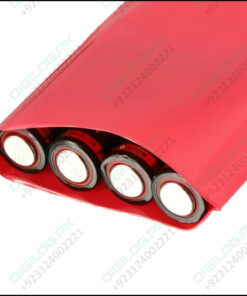


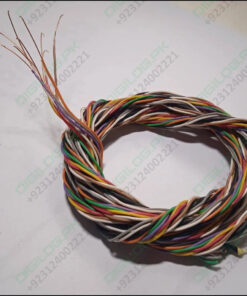

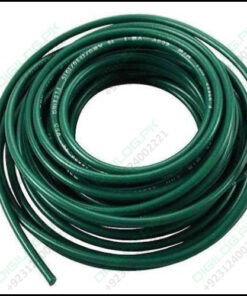
Reviews
There are no reviews yet.